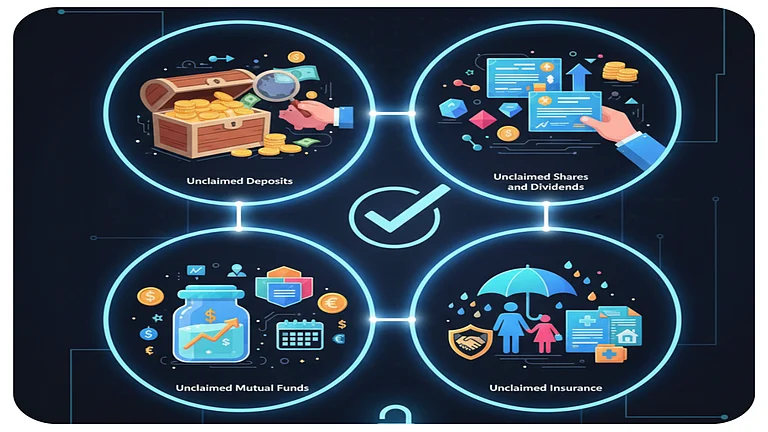The Income Tax Department (ITD) assesses your income in several ways. The first step in income assessment is the declaration of income by the taxpayer. This involves providing details of income from various sources such as salary, business or profession, house property, capital gains, etc. Accurate and comprehensive reporting is essential to ensure a smooth assessment process.
“Once the taxpayer completes and confirms their return, the ITD starts the process of handling it. This might include an initial review to spot any differences or irregularities. The department uses various assessment types, such as self-assessment, summary, regular, scrutiny, best judgment, and income escaping assessments,” says Abhishek Soni, CEO of Tax2Win, an income tax portal.
Once the income is declared, the ITD employs a series of measures to verify the accuracy of the provided information. One of the key tools used for this purpose is the scrutiny process. Under scrutiny, the taxpayer may be required to furnish additional details, documents, or clarification on certain aspects of their income.
Another crucial aspect of income assessment is the concept of tax deductions and exemptions. Taxpayers can avail of various deductions under sections of the Income Tax Act, such as investments in specified instruments, expenses related to education or healthcare, and donations to eligible charities. Correctly applying these deductions can significantly impact the final taxable income.
What Are The Most Common Methods To Do It?
There are different types of income tax assessments:
Self-Assessment: Taxpayers determine their income tax liability by consolidating income, adjusting for losses, deductions, and exemptions, and calculating their tax liability. Self-assessment tax, if any, must be paid before filing the return.
Summary Assessment: This assessment type operates without human involvement. It involves cross-checking the information provided by the taxpayer in their income return with the data accessible to the ITD. During this process, the department verifies the accuracy and reasonableness of the return. The online processing of the return automatically corrects arithmetic errors, invalid claims, and disallowances.
For instance, if the taxpayer claims a higher credit for tax deducted at source (TDS) than what department records show against their PAN, an adjustment is made. This adjustment could potentially increase the taxpayer's tax liability. Following these adjustments, if the taxpayer is required to pay taxes, they receive an intimation under Section 143(1). The taxpayer must then respond to this intimation accordingly.
“This automated process verifies the return against department records to identify errors/ arithmetical errors, discrepancies, and incorrect claims and disallowances. Adjustments are made if necessary, and the taxpayer is informed through an intimation under Section 143(1),” says Soni.
Regular Assessment: “The Assessing Officer or an Income Tax authority, not below the rank of an income tax officer, is authorised by the ITD to carry out this assessment. The goal is to ensure that the taxpayer has not understated their income, overstated expenses or losses, or underpaid taxes. The Central Board of Direct Taxes (CBDT) has established specific criteria based on which a taxpayer's case is selected for a scrutiny assessment,” says Archit Gupta, founder and CEO of Clear, a tax portal.
For example:
a. If a taxpayer is under scrutiny assessment, the department will issue a notice in advance. However, this notice cannot be served after six months from the end of the financial year in which the return is filed.
b. The taxpayer will be required to present their books of accounts and other evidence to validate the income declared in their return. After thorough verification of all available details, the assessing officer issues an order either confirming the filed income return or making additions. This results in an income tax demand, to which the taxpayer must respond accordingly.
Scrutiny Assessment: Following the submission of an income tax return, the ITD may assign an income tax officer to assess the filing. The taxpayer is notified through an income tax notice under Section 143(2). The officer may then request information, documents, and books of accounts for a scrutiny assessment, subject to thorough examination. The officer calculates the taxpayer’s income tax liability,
and if a disparity exists between the income and the tax due, the taxpayer can either make the additional payment or receive a refund.
If the taxpayer is dissatisfied with the assessment, they have the option to seek rectification under Section 154 or submit a revision application under Section 263 or Section 264. In the event that the scrutiny assessment order is deemed invalid, the taxpayer can escalate the matter by appealing to higher authorities, following the hierarchy of corporate income tax (CIT) (A), Income Tax Appellate Tribunal (ITAT), High Court, and the Supreme Court.
Best Judgment Assessment: This assessment comes into play under the following circumstances:
a. If the taxpayer neglects to respond to a notice from the department instructing them to produce specific information or books of accounts.
b. If they fail to comply with a special audit ordered by the income tax authorities.
c. If the taxpayer doesn't file the return within the due date or any extended time limit allowed by the CBDT.
d. If the taxpayer doesn't adhere to the terms outlined in the notice issued under summary assessment. Following an opportunity to hear the taxpayer's argument, the assessing officer issues an order based on all relevant materials and evidence available. This process is referred to as the Best Judgment Assessment.
Income Escaping Assessment: When the assessing officer has sufficient grounds to believe that any taxable income has not been properly assessed, they are empowered to assess or reassess the taxpayer's income. The time frame for issuing a notice to reopen an assessment is within four years from the end of the relevant assessment year.
Scenarios That May Trigger Reassessment:
a. The taxpayer possesses taxable income but has not yet submitted their return.
b. After filing the income tax return, the taxpayer is discovered to have either understated their income or claimed excessive allowances or deductions.
c. The taxpayer has failed to provide reports on international transactions, as required. The reassessment process may conclude swiftly for some taxpayers, while it can be quite challenging for others. If you find dealing with income tax officers difficult, it is advisable to seek assistance from a chartered accountant to handle your case.
Communication: Following the assessment, the ITD communicates its findings to the taxpayer through an assessment order. This order outlines the final tax liability or any refunds due.
Appeals: “If the taxpayer disagrees with the assessment order, they can file an appeal with the appropriate appellate authority within the stipulated time frame. The appellate authority reviews the case and makes a decision,” adds Soni.














